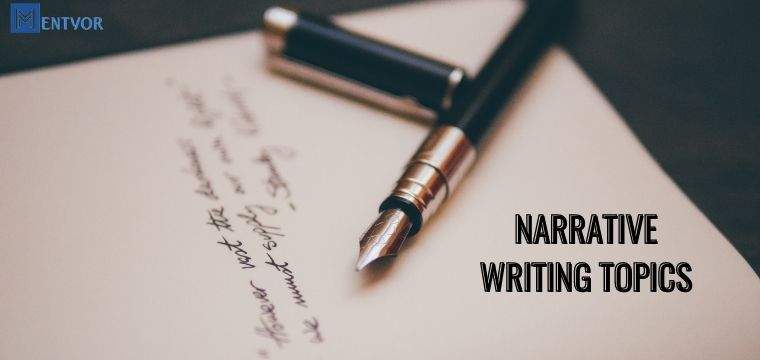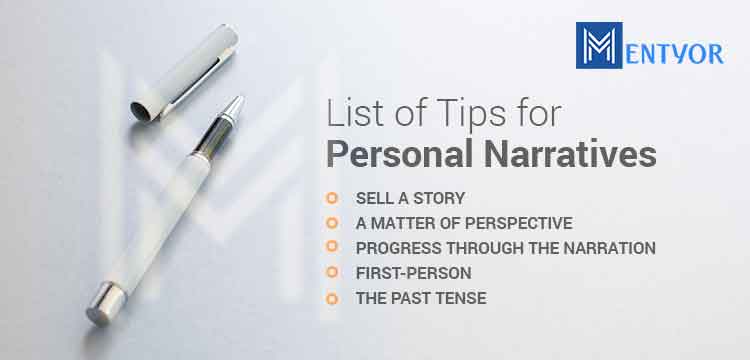Narratives are the meaningful art of story writing. Such a piece of work incorporates a protagonist or the lead character and his or her journey in life. Furthermore, ideally, the protagonist faces a range of problems caused by an antagonist. Therefore, with many such tragic, romantic, or suspenseful turns of events, the protagonist makes his or her way through many experiences. The plot interests and intrigues the readers, it is thus one of the most amusing types of writing. Hence, here we analyze the various aspects associated with narrative story writing such as; Narrative writing structure, Narrative writing skills, Narrative writing topics, Narrative writing examples and Personal narrative writing.
Check out previous blog : ESSAY WRITING: THE COMPLETE GUIDE
NARRATIVE WRITING STRUCTURE
Any story is incomplete without its structure or format. The structural aspect of any write-up is thus extremely important as this is what makes it presentable and appealing. However, each story has its own unique and distinct pattern, this uniqueness forms the heart of narrative writing structure. Narrative structure are the plot and storyline. The storyline provides it a framework within which the characters live. Furthermore, the three-act structure gives birth to the narrative structure in most of the narratives. Here we present the three-act narrative writing structure:
Suggested blog : How To Write An Essay – Best Essay Writing Service
ACT 1- THE BEGINNING
INCITING INCIDENT
This part is also known as the status quo, regular lives of main characters are displayed in it. By the end of this part, an incident or an event occurs which drives the story forward.
Cinderella, doing her daily chores and the arriving of an invitation to the royal ball is a narrative writing example for this.
PREDICAMENT
This is when the protagonist or the main character agrees to accept the call to action. Hence, the central conflict is sets up.
Cinderella accepting to go to the ball is a narrative writing example for this.
ACT 2- THE MIDDLE
OBSTACLE 1
Here the lead character faces the first challenge towards attaining the goal. Furthermore, as protagonist faces a dead end as tensions rise. Cinderella discovering her step-sisters have destroyed her ball gown is the narrative writing example for this.
MIDPOINT
This is the point when character development happens at its best. The main character realizes some changes and aims to become a stronger or better individual. Thus, fairy godmother arriving to help Cinderella and her consequent transition is the narrative example for this.
Related blog : WRITING AN INFORMATIVE ESSAY
RISING ACTION
With a sub-plot emerging and stakes getting higher this is the most thrilling section of Act 2. Hence, trying the lost glass slipper by every woman in kingdom in the narrative writing example from Cinderella.
BIGGEST OBSTACLE
As it is said, “save the best for last”, this is the point when the protagonist faces the biggest challenge, the stakes are highest at this point of the story. For example,Cinderella’s stepmother locking her in the room and forbidding her from trying the glass slipper.
ACT 3 – THE END
THE GREAT TWIST
At this point, the changed characteristics of the protagonist help him or her to fight the obstacle and they regain the ability to attain the goal. For example, Cinderella receiving help from the mice to be unlocked from her room and rushing down to try the slipper.
THE RESOLUTION
At this point of the story, the protagonist answers the main problem or question. Thus, the resolution of the conflict leaves the readers satisfied. For example, when the slipper perfectly fits Cinderella and she marries her prince.
Thus, the three-act narrative writing structure helps in building a great and impressionable storyline that excites and satisfies the readers. It is a method employed by many great storytellers as well as filmmakers.
You can take our services on “Narrative Writing” for better results in your examinations.
NARRATIVE WRITING SKILLS

The narrative writing skills can be quite demanding as well as challenging for any writer. It is one of the most creative forms of writing where only one’s imagination can guide him or her. Hence, here we glance through a few skills required by a writer to excel as narrative writing skills.
The essential narrative writing skills are as follows:
VORACIOUS READING OR WATCHING
Narrative writing skills originate from a place that is situated deep within a person’s mind. It is through observing and reading that one gets true knowledge and experience in life. Stories are about these beautiful or sorrowful experiences. Furthermore, with the help of reading and watching movies writers can get a better understanding of the structure and progression for writing a narrative.
ESTABLISH A CAUSE AND EFFECT RELATIONSHIP
This is another important writing skill that helps the story to be more plausible. No one likes reading a story that is leading aimlessly with no proper direction. Hence, a series of events forms a story with the help of cause and effect relationship
Read our blog : 7 EFFECTIVE TIPS FROM MENTYOR TO SHAPE UP YOUR CAREER
DIALOGUES | NARRATIVE WRITING SKILLS
Dialogues are a method to drive the story ahead, it helps establish relationships between the characters and absorbs the readers into the story. Furthermore, dialogues often reveal the style and role of the characters. The writer must take care that the dialogues are not too long or confusing. Hence, writers often talk amidst their friends to ensure that dialogues are tightly written. Moreover, a good writer also takes care that dialogues are not wasted for writing greetings or for an information dump.
CONCLUSION
Nothing spoils a story more than an unsatisfying ending. All the struggles and failures of the lead character should pay off in the end. Though it does not mean that stories should not have a tragic or surprising ending, rather every story deserves a suitable ending, one which fosters the essence of the narrative.
NARRATIVE WRITING TOPICS

The unique element of a narrative essay emerges from the perspective of the writer. It is the voice, story, and distinctive figures of speech adopted by the writer that intrigues a reader to read a particular story. Narrative story writing represents a creative picture, it brings to life the personality and dreams of the characters who revolve around a theme. Thus, the theme of narrative story writing often determines the narrative topics.
Hence, here we list some ways to choose your narrative writing topics:
STORIES ARE THE HEART OF NARRATIVE | NARRATIVE WRITING TOPICS
The audience often relates itself to a personal experience or a moral story. Furthermore, many narrative stories are about an event that has affected the masses. For example, Titanic or the story writing about World War II.
IGNITING IDEAS
A writer must always chase what ignites the passion within him or her. Ideas can touch a person at any time, it can be through a dream or a real-life experience. It is possible that igniting ideas may influence and encourage the readers to engage with something fruitful and creative.
PLAN WELL | NARRATIVE WRITING TOPICS
Planning provides a comfortable structure to the writer as well as the reader. Thus, for narrative story writing, planning the sequence, characters, sub-plots, themes, and backdrops is a must.
EXPERIMENTING
A narrative story is subjective in all its forms, a narrative writer often experiments by merging different life events and personal experiences. This provides authenticity and intimacy.
Thus, these methods are likely to help a writer to choose the narrative writing topics. However, here we present some options for narrative writing topics:
- The memorable days of my life
- Starting a new job
- A haunting experience
- Faith
- A time when I was lost
- The funniest chatter
- My true inspiration
- The day when I became a leader
- The best traveling experience of my life
- The person of my dreams
PERSONAL NARRATIVE WRITING

Have you ever wondered about the summer breeze touching your hair? Or about the first time you were dropped at school? These are not the experiences that merely contribute to building personality, but also help in creating beautiful stories or anecdotes. It is all about your personal experiences, thus, it is written in first-person. Moreover, a great piece of personal narrative writing will be flooded with the writer’s personality, style, communication patterns, and events. Furthermore, personal narratives would include the mild touch of the books you have read, the people you have met, or the films you have watched. Hence, writing a personal narrative can be an exhilarating task.
We thus, present a list of tips for personal narratives.
SELL A STORY
A personal narrative is not a formal piece of document, it should thus, be flooded with creativity and metaphors. Hence, like any other piece of creative work, it should also have a structure of introduction, body, and conclusion. In this case, it becomes the three-act structure. The conclusion must be meaningful and the story should have a direction.
A MATTER OF PERSPECTIVE
This might sound easy but it is not, forming a perspective on your life events can be exhaustive. Thus, the perspective of the writer will allow the reader to understand the story and give him or her a chance to agree or disagree. It might not be so for all the write-ups but for a personal narrative, perspective is the key ingredient.
PROGRESS THROUGH THE NARRATION
Narration is one of the most important aspects of personal narratives. The narration in the story should guide the readers to the next chapters of the story. Hence, the narration should not make it obvious for the reader to guess but rather develop an overarching plot that keeps the intrigue alive.
FIRST-PERSON
Personal narratives are always written in the first person. The obvious reason being that it is a writer’s account. However, he or she should not overuse the term at the risk of sounding self-centered.
THE PAST TENSE
Personal narrative writing almost always uses the past tense, thus, separating one’s current situation and the past situation. However, what tense it may be the key is to keep the flow of time clear in your head.
You can also check our blog on “Essay Writing: The Complete Guide” for better understanding.
THE FINAL WORD
Narrative story is thus, one of the finest and the most imaginative forms of writing. It consumes the writer and takes him or her to a world where they belong. Hence, more and more writers, students, journalists, and others have indulged in writing narrative stories that inspire and stimulate the inner conscience of a person.


 WhatsApp
WhatsApp